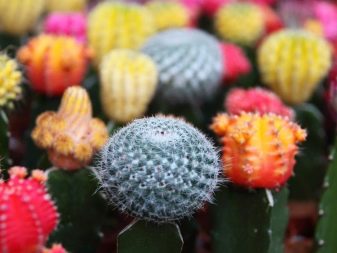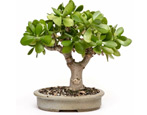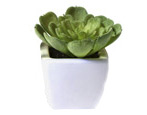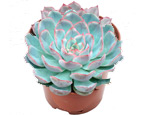Colored cacti: varieties, tips for growing and care

Who doesn't love the cozy and lively atmosphere at home! Indoor plants are exactly what allows you to make any interior truly enjoyable. If you want to dilute the atmosphere with something new and unusual, then give your preference to multi-colored cacti. The name speaks for itself. Colored cacti are unusual indoor flowers that can easily cheer up or dilute a boring interior with their brightness and originality. Even a child can acquire such a miracle and take care of it. More on this and more in our article.
All about dyeing needles
First of all, it should be said that the process of dyeing cactus needles itself is completely safe both for the environment and for the plant itself. All you need to do is use a safe dye when painting. As a rule, food coloring is used because of its safety and rich color palette.


Plants are most often tried to give bright colors. This is due to the fact that "poisonous" shades appear much faster on the plant.
If you want to become the proud owner of a cactus with red, yellow, blue or even orange thorns, you do not have to immediately seek help from florists or buy a flower for fabulous money. You can easily add a beautiful color to a cactus at home. To carry out this "ritual", we need the following:
- small cactus (you can take "kids");
- a pot for growing a plant;
- substrate (you can take sand);
- food coloring of any color (a rich, bright shade is desirable).


First, you need to mix the substrate with the dye in a ratio of 1: 3. After that, fill your cactus pot with the resulting mixture a little and plant the pre-prepared plant there. Add the remaining mixture of the substrate with food coloring. Next, you need to water the flower with water. As the water is absorbed, the cactus spines will change their color. After completing all of the above points, the staining process can be considered complete. Repeated or additional touch-up is not necessary. It remains only to wait for the result. This may take several years. However, after 2-3 months, it will already be possible to observe a slight staining of the needles.
Experts recommend choosing a small cactus for coloring, which will not grow quickly after painting its thorns. An important role in this case is played by the peculiarities of watering the plant. Also, in large subspecies, the thorns grow much more slowly, and over time they become covered with a thick crust.
It is almost impossible to artificially impart a different color to such needles.



Colored cacti in nature: an overview
Our planet is huge, and what can not be found on it - colorful succulents are no exception. In nature, there are cacti with a wide variety of shades of needles and heads. We bring to your attention some of the brightest representatives of multi-colored cacti. Let's see what types of colored cacti exist.
Cereus
The homeland of the cactus is Mexico. This species usually has white needles. They completely cover the entire stem and protect the plant from direct sunlight. The shoot itself has a rounded shape and is divided into several sectors.It is important to note that the color of the needles is preserved only if the plant receives a sufficient amount of solar heat.

Gruzoni
The trunk is spherical, red, and includes several sectors. The spines are long and are arranged in bunches on the stem. Also painted red.

Myrtillocactus Geometrisans
In this case, the trunk itself has a blue color. The needles are colored either white or light green. In order for a cactus to always have such an unusual color, it is necessary to carefully monitor its habitat.

Geometrizans with black needles
The stem is blue in color. Requires proper personal care. It grows only in rocky soil.
Loves sunbathing, as it tolerates direct sunlight on the stem well.

Geometrizans with yellow needles
It should be noted that the color of the needles can be of different shades of yellow. The trunk itself is painted in a green tint that is pleasing to the eyes.

Gymnokalycium Mikhanovich
The plant comes from the Land of the Rising Sun. It was artificially bred in 1941. There is the following variation in the shades of the cactus trunk: pale and bright pink, cream, purple, red, yellow.

Echinocactus Gruzon
Originally from Mexico. In nature, you can find such a plant more than 100 centimeters in diameter and in height. Unlike many other subspecies, this one is rather unpretentious to care for. The color of the thorns is rich yellow. Succulent blooms extremely rarely, but the flowering period itself usually falls in the summer season.
Flowers are usually solitary with narrow yellow petals.

Astrophytum
By nature, this cactus has an unusual appearance. You can find two types of astrophytum: speckled and stellated. It is almost impossible to grow such a flower at home. He painfully tolerates direct sunlight, which is why he needs to grow in a shady area.

Care Tips
It should be said right away that colored cacti require a lot of attention. Taking care of them is not easy. They are capricious precisely because of their bright appearance. It does not matter how the plant acquired its color (artificial or natural), it is necessary to pay due attention to it. For all varieties of succulents, there is one set of care rules. Having acquired colorful cacti, you definitely need to follow the following instructions.
- Getting enough sunlight. In order for the plant to fully develop and not lose its bright color, it must necessarily receive a lot of solar heat.
- Preventing direct sunlight from entering the cactus. In this case, the sun's rays do not threaten only the plant with white thorns. It's all about its structure. The needles wrap tightly around the trunk and protect it.
- Infrequent watering. Everyone knows the fact that cacti do not like abundant moisture. Don't let the potted soil get too dry, though. If the soil crumbles, then you will have to loosen it by hand.
- Frequent feeding of cacti with yellow thorns. For such subspecies, feeding should be done several times more often than for other subspecies. Feeding must be done strictly in accordance with the instructions.



Special attention should be paid to the rules for caring for plants, the color of the thorns of which was given with the help of food coloring at home. If you have got yourself such a "pet", do not forget about the following recommendations from florists.
- Moisture enrichment. Such flowers need to be saturated with moisture more often than non-colored subtypes, but the amount of water should be much less. This way you will be able to maintain the brightness of the needles and not oversaturate the substrate with moisture. For example, plants with blue, yellow, or pink needles need to be watered with food coloring water once every 7 days. On other days, use plain water. This procedure is necessary if you want the needles to be of a delicate shade.
- Features of transplanting multi-colored cacti. If you decide to transplant, then do not forget to first water the soil in a pot with water and food coloring 2-3 times, where you will transplant your "pet". In case of neglect of this stage of transplantation, the needles may lose their brightness or gaps will appear on their color.


Reproduction
Colored cacti tend to propagate vegetatively. This is due to the fact that it is extremely difficult to find the seeds of such subtypes. Moreover, this method of reproduction is quite simple, and the plants are grafted without much difficulty. Usually, a stock cactus is chosen for reproduction, which will develop well, for example, echinopsis. As a scion, there can be a "baby" of a hymnocalycium or a chamecereus.
The very process of reproduction in a vegetative way is as follows.
- The "baby" must be separated from the mother flower. This is done by smoothly turning to the side.
- We make an even cut with the blade treated with an antibacterial agent. It is necessary to make a cut at the base of the shoot.
- Next, grafting takes place. We connect two cuts: just made on the scion, with the one already prepared in advance on the rootstock.
- A bandage is applied for 2-3 days. It is best to use soft rubber. The bandage itself should not be too tight.
- The use of a plastic or glass cover is allowed. It is important that it is not tightly worn, and there is room for proper air circulation.
- We create all the conditions for a fruitful reproduction process. The air temperature should be several degrees above room temperature. You need to water only with warm water.



After the whole process has been successfully completed, it is not recommended to immediately expose your "pets" to a place where direct sunlight falls. Colored cacti do not tolerate them very well.
However, they can also suffer from a lack of solar heat, so it is necessary to gradually accustom them to contact with the sun.
In the next video, you will find the rules for caring for the gymnocalycium.























































Hello. I have a question that I cannot find an answer to, how many times a week should a cactus be watered? And how quickly will it lose its color if it is not tinted? It's not very big (just bought).
They need to be watered in the summer no more than 1 time in 2 weeks and after the soil has completely dried out. In winter, they are removed to a cool place with a temperature of no more than +15 degrees and are not watered from November to March. To maintain the color, it is enough to plant the echinocactus in a pot filled with a mixture of ordinary cactus soil with food coloring in a ratio of 1 to 3. Each time the cactus is watered, it will absorb some of the dye.
The comment was sent successfully.